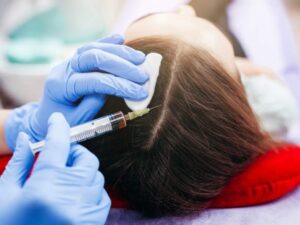In this continuing blog, I will talk about reproductive and genital health care in women, starting from childhood, moving to youth and sexual maturity, and finally touching upon sexual issues among the elderly and the menopausal. Shame, embarrassment and social taboos prevent us from discussing these issues even with trusted members of our social circle.However a little knowledge and information can go a long way in giving us a better understanding of our bodies, and preventing illnesses which can be debilitating to fatal.
Proper training in genital hygiene is important, starting from childhood, to prevent infections from developing and spreading. For women, the external part of the vagina and labia must be cleaned with soap and water at least once a day. It is a healthy habit to void urine before and after intercourse, following which the area should be cleaned again. Over-washing and douching is discouraged as it upsets the natural flora and pH balance of the vagina, leading to a vicious cycle of irritation, itching and further obsessive washing of the area with harsh soaps and detergents. Washing should be performed using a singular front to back motion to avoid bacteria around the anus from coming into contact with the vagina or urethra (the external opening of the bladder). Wash clothes and towels must be individual, and washed frequently. Do not apply perfumes or deodorants directly to the genital region.
Puberty and menstruation is the first milestone in a girl’s journey towards womanhood. It is the parent’s responsibility (and not a doctor’s job) to educate their daughters on the changes their body is going through, in a sensitive and relaxed manner. Disposable sanitary napkins are the best choice for unmarried girls and virgins. For married women, there are other options like tampons, which are more comfortable, but need to be changed every 4 hours to avoid serious infections like Toxic Shock Syndrome. Menstrual cups are eco-friendly, and are a cheaper and safer option to tampons, but are not readily available in India and the Middle-East.
Premenstrual syndrome (PMS) is a combination of physical, emotional, psychological and mood disturbances that occur after a woman ovulates (approximately 7-10 days prior to periods) and ends with menstruation. About 80% of women experience some premenstrual symptoms. These include mood changes like anxiety, irritability and exaggerated mood swings; along with physical symptoms like fatigue, bloating, breast tenderness, acne and appetite changes. These symptoms can be controlled or minimized with some exercise, and minor dietary modifications like avoiding salt, caffeine, alcohol, smoking and refined sugars. It is helpful when parents or partners have a patient and sympathetic attitude towards the woman.
Intercourse is a highly emotional act for most women, and it is important for parents and teachers to be more open minded about sex education. Female frigidity in most cases is psychological, and a result of unfounded fears and phobias stemming from lack of awareness.
Urinary tract infection (UTI) is a bacterial infection that can affect any part of the urinary tract (urethra, bladder, or rarely the kidneys). The main culprit is bacterial contamination from the anal region. Women are more prone to UTIs than men, as women have shorter urethras, and there is a closer proximity between the anus and the urethral opening. Sexual intercourse is one of the commonest risk factors of UTI, as vigorous intercourse can irritate or injure the urethra and facilitate transfer of bacteria from the anal region to the urethra. Certain sexually transmitted infections like gonorrhea and Chlamydia can also cause UTI. The symptoms include burning sensation or pain during urination (“it feels like my pee is on fire!”), increased urge to urinate even though only a small amount of burning urine is passed, cloudy urine, lower abdominal pain, fever and shivering, urinary incontinence (involuntary dribbling of urine) and blood in urine. Treatment includes oral antibiotics, syrups and tablets to calm your irritated bladder and reduce the acidity of your urine, and Paracetamol for fever. It is also helpful to drink plenty of water. Improper treatment can leave you vulnerable to chronic UTIs or recurrent infections. Unsweetened cranberry juice and prolonged course of low dose antibiotics can help in bringing down the number of episodes.
Pregnancy is one of the most important and life changing event in a woman’s life, and every girl will get pregnant one day. Pregnancy is first suspected when a woman misses her period. Other early signs include tiredness, occasional dizziness, and darkening of the nipples and the labia. A simple urine pregnancy test can be performed at home to confirm pregnancy. Most home pregnancy kits work in the same way. Collect the urine sample in a clean container, immerse the ‘well’ end of the pregnancy stick into the container, take it out after 5 seconds and wait for 5 minutes for the results to appear. 2 red lines indicate a positive result (pregnancy), and one red line is a negative result (meaning you are not pregnant). If there is no line or a single faded line, then the result is invalid, and you will have to repeat the process with a fresh pregnancy stick.
Infertility is an emotionally painful and surprisingly common medical issue afflicting many women these days. A couple is considered infertile if they have been unable to conceive after 12 months of regular contraceptive-free intercourse. Infertility can be due to medical or anatomical problems in the male, or female, or both partners. Common causes of infertility in a woman include
• Uterine fibroids
• Endometriosis
• Damage to fallopian tubes following infections (like Tuberculosis) or surgery
• Long term untreated (or inappropriately treated) STDs like Gonorrhea or Chlamydia.
• Hostile cervical mucus- When the cervical mucus creates a thick barrier which the sperm cannot penetrate.
• Hormonal imbalances like cysts in ovaries, thyroid disease and increased blood prolactin levels.
• Psychological issues like chronic anxiety and stress resulting from poor emotional support, which can lead to hormonal imbalances and irregular cycles.
The good news is that most cases of infertility can be treated successfully these days. Visit a gynecologist along with your partner. Your doctor will take a detailed note of your medical history, including questions about your menstrual cycles. You may have to undergo genital examination, blood tests, an ultrasound scan of the pelvis, and a laparoscopy and hysteroscopy, where a lighted tube is passed through the uterus or a small hole in the abdomen, to get a direct look at the internal organs. Most of these tests are non-invasive or only minimally invasive.
Treatment of infertility can include natural methods (for example, intercourse should take place during certain days of your menstrual cycle), anti-infertility medication, and assisted reproductive techniques like InVitro Fertilization (commonly known as “test-tube babies”).
If you are trying to get pregnant, regardless of the method, it is important to quit smoking and drinking, exercise moderately, keep your weight in check, lower stress levels, have regular intercourse, and make sure to receive your rubella (measles) vaccination.
Young and sexually active women are vulnerable to HPV infections with the Human Papilloma Virus. This virus causes genital warts, but many women can harbor this virus in their cervices, with no apparent symptoms at all. Like I have already mentioned in my previous issue, almost all cervical cancers are caused by HPV infections. Cervical cancer is one of the most common cancers afflicting women across the world, and it is more common in women who have been having sex from an early age, have had multiple sexual partners, and in women who have had multiple children. A pap test is an important screening test performed by gynecologists to detect cancerous or pre-cancerous growths in the cervix. It is recommended that women aged 21-55, who have had sex, must get the test done every 3-5 years (starting from a few years after the first sexual experience). It is a painless test, where your doctor will insert a speculum into the vagina, and use a brush like device to collect a smear of cells from your cervix. The cells are smeared onto a glass slide and sent to a lab for testing under a microscope. Results should be ready in a day. Early detection of abnormal or cancerous cells can help in quick and effective treatment, which can potentially save lives and avoid mutilating surgeries.
The other leading cancer among women is the dreaded breast cancer. Breast cancer usually begins as a painless lump in the breast or the armpit. Risk factors include increasing age, genetic factors like having a close relative (your mother or a sister) who has suffered from breast cancer, women who have had fewer children or had their first child at a late age, women who have not breast-fed their children, women who attained puberty at a younger age (less than 12) or reached menopause at an older age (over 51). The use of artificial estrogen containing hormones (like the birth control pill, or hormone replacement therapy) can also increase the risk of breast cancer. Obesity, excess alcohol intake and a diet rich in fat and red meats can also increase the risk of breast cancer.
Awareness and early detection is the key to beating breast cancer. The symptoms usually include a lump or swelling in the breast or armpit or above the collar bone that does not go away. Other symptoms include one sided nipple discharge (which is usually bloody), newly developed nipple inversion, and other skin changes like redness or dimpling. Ask your gynecologist to teach you how to perform the breast self-examination. This should always be performed at the same stage of your menstrual cycle, preferably at the end of your menstruation. If a lump is felt, your doctor might ask you to undergo a mammogram. A mammogram is a painless x-ray of your breasts which may help define and identify the nature of your lump (a fluid filled cyst or a solid lump). Mammograms can also be done as a routine screening test to detect early cancers. The only way to diagnose cancer with certainty is to biopsy the tissue in question. Biopsy can be performed by sticking a needle into the breast lump to suck out some tissue, which is then sent to the pathologist for testing. This is a minimally invasive procedure, which can give highly accurate results.
Treatment options for breast cancer include radiation, hormone therapy, chemotherapy and surgery.
Like every girl will attain puberty and become pregnant one day, every woman will inevitably reach menopause someday. Menopause is the time in a woman’s life when her reproductive cycles end. It is identified as a permanent absence (at least 1 year) of monthly periods. It is a biological process when the function of the ovaries ceases and the woman is considered to be infertile and no longer in need to take into consideration the possibility of pregnancy. The first symptoms are noted in the mid-forties, and include mood swings and hot flashes. Later symptoms include vaginal dryness, decreased sex drive, skin wrinkling, bone thinning, and joint pains. Hormone Replacement Therapy (HRT) with estrogen is not without side effects, and must only be taken under medical advice and guidance, to control severe symptoms.




